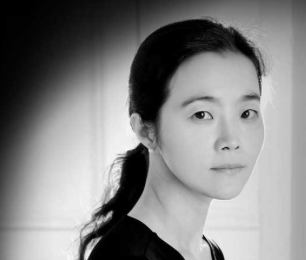CD In Review Sohyun Ahn: Mozart Piano Sonatas and Duport Variations
Sohyun Ahn: Mozart Piano Sonatas and Duport Variations
The ClassicArt
JEC-0242
As a young piano student, I was often admonished by my teacher to let the music speak for itself. “Whatever you want to add, leave it out…and whatever you want to leave out, keep it in!” At the time, I saw this as a curb on my expressivity, but I later came to appreciate the message. This concept of fidelity to the composer came to mind often as I listened to the recent recording of Mozart Sonatas and the Duport Variations by the pianist Sohyun Ahn. Click to purchase MP3 or CD.
Mozart composed the sonatas K. 330, 331, and 332 in 1783 during his time in Vienna and Salzburg, and published them as a group. In order to support his new wife Constanze, he turned to teaching to supplement his income. Although these three works would never be described as student pieces, their apparent simplicity would have made them suitable for Mozart’s pedagogical inclinations.
In general, Ms. Ahn adopted a straightforward, unadorned approach to her readings of these sonatas. Her mastery of the functional aspects of technique is complete, which allows her the freedom to craft a detailed interpretation. In the outer movements especially, a crisp, dry staccato and sparse pedaling evoked the texture of a fortepiano of Mozart’s time.
The arc of these three works traces a gradual expansion from small ideas to big ideas, and the Ms. Ahn understood the nature of this progression. The musical events in the Sonata No. 10 in C major, K. 330 take place within a modest framework. Ms. Ahn remained within the confines of this framework, yet was able to produce a perfectly balanced, crystalline performance. In particular, her second movement was phrased with tender rubato and room to breathe.
The lack of adherence to traditional Sonata form is a defining aspect of the Sonata No. 11 in A Major, K. 331. In the first movement, structured as a Theme and Variations, there is ample opportunity for a variety of stylistic contrast. Ms. Ahn was at her best in the beautifully posed third variation, and a brilliantly vibrant sixth variation. Perhaps because it is my favorite, I felt the quasi-operatic fifth variation could have used more drama and a more cantabile melodic line. The famed Rondo Alla Turca, however, was a very pleasant surprise. After hearing so many hackneyed renditions of this over the years, I appreciated this pianist’s miniaturistic version, with tapered phrasing and modest dynamic range.
This trio of sonatas most unconventional member is its last, No. 12 in F Major, K. 332. In terms of technique alone, it is the most rigorous, but more importantly, it requires the interpreter to think more orchestrally in terms of color and voicing. Ms. Ahn seemed to enjoy the challenge. Of the three, this was her most sophisticated, personalized reading. Her opening gesture in the Allegro Assai was thrilling, and she maintained a combination of impeccable skill and joyous feeling throughout the rest of this movement.
Hardly a year separates the publication date of these first three sonatas from No.13 in B-flat major, K. 333, but the latter already shows a striking difference in complexity. The Andante Cantabile movement, with its chromatic modulations and liberal use of melodic ornamentation, is one of Mozart’s most sublime creations. As each sonata on this recording unfolds, a more flexible and evolved artistry is required. Ms. Ahn became a vessel for all of them, and then as a coda, she gave us the charming Duport Variations, K. 573, maintaining her high level of consistency and musicality.
I have two observations which are minor, but nonetheless merit a mention. In passages where a phrase was repeated verbatim, the pianist almost always played the second phrase as an echo. This can be effective, but only when used sparingly. Secondly, while her sense of rhythm is impeccable, I did find it constricting at times, especially in cases where the harmonic changes suggest more expansive phrasing. But these are small matters in the context of this remarkably impressive recording by Sohyun Ahn.

